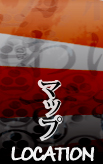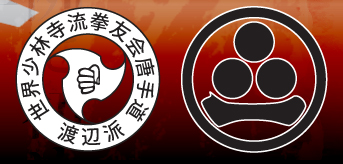 |
|||||||
 |
 |
 |
 |
 |
 |
 |
 |
|
|
|||||||
Background Information About Our Style and Dojo
One of the chief proponents of Shorinjiryu Karate Do, and a leading disciple of Shinan Kori Hisataka, is Shihan Shunji Watanabe, 9th Dan, chief instructor and president of the Shorinjiryu Watanabe-Ha Karate-Do Federation.
 Shihan Watanabe was born in Japan in 1938, and began his martial arts instruction with Shinan Kori Hisataka in 1955 at the Hombu dojo in Tokyo. (See image below.) He was promoted to Shodan in 1958, and most recently promoted to shichidan in 1985.
Shihan Watanabe was born in Japan in 1938, and began his martial arts instruction with Shinan Kori Hisataka in 1955 at the Hombu dojo in Tokyo. (See image below.) He was promoted to Shodan in 1958, and most recently promoted to shichidan in 1985.

In 1967, Shihan Watanabe came to North America, by way of Canada, to demonstrate Shorinjiryu Kenkokan Karate at the Montreal Expo. He made the journey along with Shihan Masayuki Hisataka, the son of Shinan Kori Hisataka. Shihan Watanabe was asked by Shinan Hisataka to remain in North America and help to develop Shorinjiryu Karatedo in the United States and Canada. Shihan Watanabe made his home in Baltimore, Maryland and started the Japan Karate and Judo Center, which he maintains to this day.

Shihan Watanabe has carefully preserved the styles and principles taught to him by Shinan Hisataka (pictured below), maintaining a traditional Japanese dojo; something rarely found in the United States today. Shihan Watanabe makes no compromises in his ideas or methods of teaching for the sake of modern concerns. The Baltimore dojo is for those dedicated students who love traditional Japanese karate and are not afraid of hard work. Shihan Watanabe believes the most important goal in martial arts training is the continual effort towards self-improvement, not just the perfection of fighting techniques. He expects his students to demonstrate respect, responsibility, manners, and effort.
The essence of our style is best summarized by the motto of Shorinjiryu Karate: Doku Ji Gyo Sei Ki, which translates to The Spiritual Development of Individuality in Mind and Body.
Shorinjiryu Watanabe-Ha Karate-Do is the evolution of Shorinjiryu Kenyukai Karate-Do, founded by Kaicho (President) Shunji Watanabe, recognizing his more than half a century of training and dedication to the original techniques taught by Shinan Kori Hisataka.

The Watanabe Kamon, or family crest (right) is used in conjunction with the Shorinjiryu seal, further emphasizing Kaicho Watanabe's influence on the evolution of Shorinjiryu Karate-Do.
Training at the Japan Karate and Judo Center consists of 5 main components:
KATA: Kata is a formal exercise done by one person. It is practiced to develop knowledge, form and style. It aims to achieve maximum efficiency in each motion as well as beauty. Kata is judged by each individual technique as well as how well the motions are integrated to compose the entire exercise.
KUMITE: Kumite is prearranged fighting form executed by two or more persons. It is practiced to develop technique, endurance, karate form and a sense of judgment and timing. This type of kumite is unique to Shorinjiryu Watanabe-Ha Karate-Do.
SHIAI: Shiai (sparring) is a karate contest. Here karate participants wear specially designed protection (bogu) so that blows may be delivered with full force without the serious risk of injury. In shiai, any technique, including throws may be used. The contest is ended when a substantial strike is delivered to a key body point or target area.
GOSHIN JUTSU WAZA: Self-defense techniques. Goshin Jutsu Waza is self-defense techniques consisting of punching, striking, blocking, kicking, throwing, holding, joint locking, grappling and choking techniques.
BUKI HO: Weapons practice. Buki-ho is a formal exercise done by one person, or prearranged fighting forms executed by two or more persons incorporating traditional weapons. Weapons such as the Bo (6 foot staff), Sai (3 pronged fork or harpoon), and Jo (4 foot staff) are practiced. This enhances the student's reflexes, timing, and extension of the empty hand techniques.
In addition, students of the Japan Karate and Judo Center become members of the Shorinjiryu Watanabe-Ha Karate-Do World Federation, and are expected to attend clinics (master classes), and tournaments scheduled throughout the year. The clinics and tournaments are located in Maryland, New Jersey, New York City, Long Island, NY, and Montreal, Canada; and the schedule is located on the Calendar page of this site. Attendance at these events is mandatory, as they are part of the testing and promotion process.
|
|
||||
|
|
|
|||
|
|
|
|||
|
|
|
|
|
|